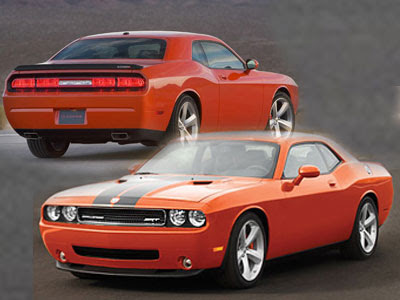The new Bentley Mulsanne, designed and engineered at Crewe from the ground-up, reaffirms the marque's intent to create a new flagship Bentley with refined performance, unparalleled levels of interior luxury and coach building skills to the fore.
The design of the new Bentley Mulsanne is a unique fusion of sportiness, coachbuilt elegance and solidity. Echoing the Bentley S-Type of the 1950s, the Mulsanne features a bold frontal design dominated by the traditional Bentley matrix grille and highly prominent, classic round inner headlamps with chrome surrounds, flanked by two, smaller outboard lamp clusters, all featuring the latest in lighting technology. The iconic 'Flying B' retractable radiator mascot is available as an option.
The long bonnet, short front overhang and long rear overhang help to convey a sense of power and movement, reinforced by muscular haunches and sharply sculptured lines which flow gracefully from the front wings to the rear. Uniquely designed 20-inch wheels (and optional 21-inch) reinforce the Bentley Mulsanne's powerful, sporting stance.
The body is produced in a new manufacturing facility at Bentley's headquarters in Crewe where traditional metalworking skills, developed over six decades, are still used extensively during the nine-week build process. It is the very opposite of volume-production car-building… but the very epitome of Bentley.
The rear screen, for example is fully enveloped by the coachwork. This provides a flowing, flawless line to the rear of the car, complementing the exquisitely formed D-pillars - whose complex curves can only be created by skilled coach-builders. All spot welds are performed by hand during the Bentley Mulsanne's construction and all panel joints are hand-brazed. These further enhance that 'hewn from solid' appearance and result in an extremely stiff body.
The complex form of the aluminium front wings, impossible to achieve with normal pressing techniques, is created using superforming, a technology usually reserved for the aerospace industry. This also makes the wings both lighter, stiffer and provides superb surface definition. Other lightweight materials, such as the composite bootlid, are used to remove mass wherever possible without compromising quality.
The latest in-car technologies are discreetly placed within the Bentley Mulsanne's sumptuous interior. A multimedia system with 40 GB hard disc drives satellite navigation, audio/video, personal data, telephone and Bluetooth® connectivity. The upper dashboard houses an 8-inch multimedia screen, positioned unobtrusively behind an electrically operated veneered door, while below sits a stylish, leather-lined MP3-player stowage drawer.
A state-of-the-art 14-speaker audio system with Digital Signal Processing (DSP) and 6-CD autochanger is provided as standard while the Naim for Bentley premium audio system may be specified as an option. This forging of two British luxury brands provides customers with the world's most powerful 2200 Watt in-car amplifier, eight dedicated DSP modes and 20 custom-made speakers, delivering an unparalleled sound quality.
2011 Bentley Mulsanne
A personalised keyless entry system allows multiple pre-programmed configurations and automatically sets radio stations, phone book, seat (including ventilation and massage modes, both front and rear), steering column and seatbelt settings and even the electrically operated rear-seat blinds for side and rear windows. As a world-first, the keyless system operates with the stainless steel door handles which incorporate touch points to initiate communication with the key for verification and entry. The Bentley Mulsanne also features keyless start, having a stop/start button on the centre console.
The Bentley interior design team has continued to develop and evolve the luxurious interiors for which their cars are renowned, based on a large-scale, research programme to identify the classic signature features that have defined Bentleys from the 1920s to the present day.
Armed with this invaluable resource, the Bentley Mulsanne's design team set itself highly challenging targets for key interior characteristics such as material design, smell, colour harmony and handcrafting. Similar targets were set for the operational refinement and robustness of all control mechanisms. The result is a hand crafted interior that fully reflects traditional Bentley values, executed to the highest possible standards, where customers may tailor their cars to their individual specification.
While other powertrain configurations were considered early on in the project, it soon became clear that these targets could best be achieved with a totally revised version of the 6¾-litre V8 engine - the very configuration that had been used so successfully in the past. However for the new Bentley Mulsanne, all the major building blocks of the engine would be comprehensively re-engineered to integrate the very latest technologies.
To achieve a significant reduction in fuel consumption and CO2 emissions, the Bentley Mulsanne V8 sees the introduction of two new control systems: cam phasing and, a first for the ultra-luxury sector, variable displacement.























